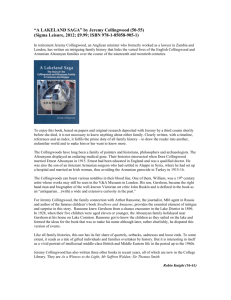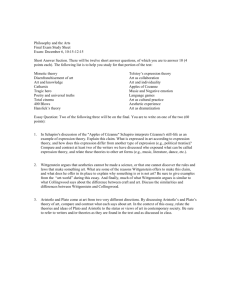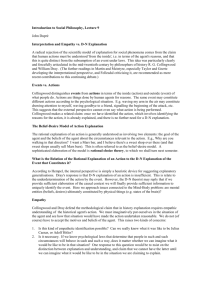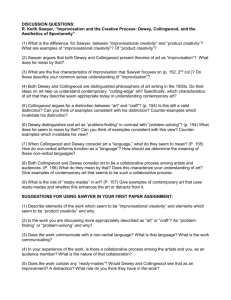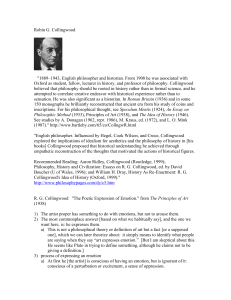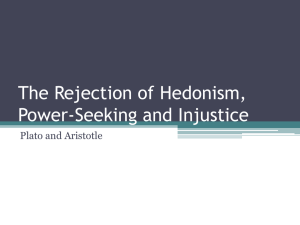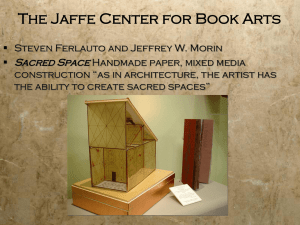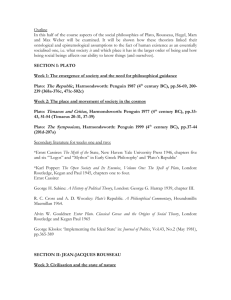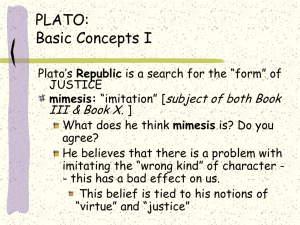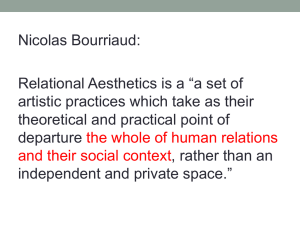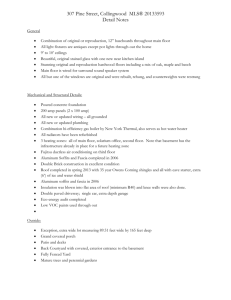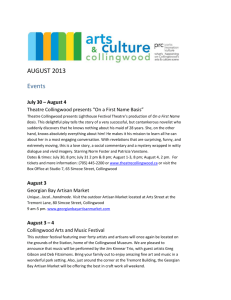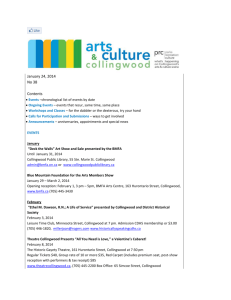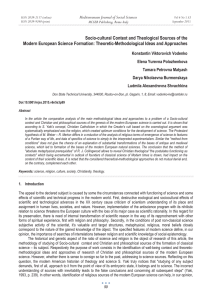Slides - Paul Thom
advertisement
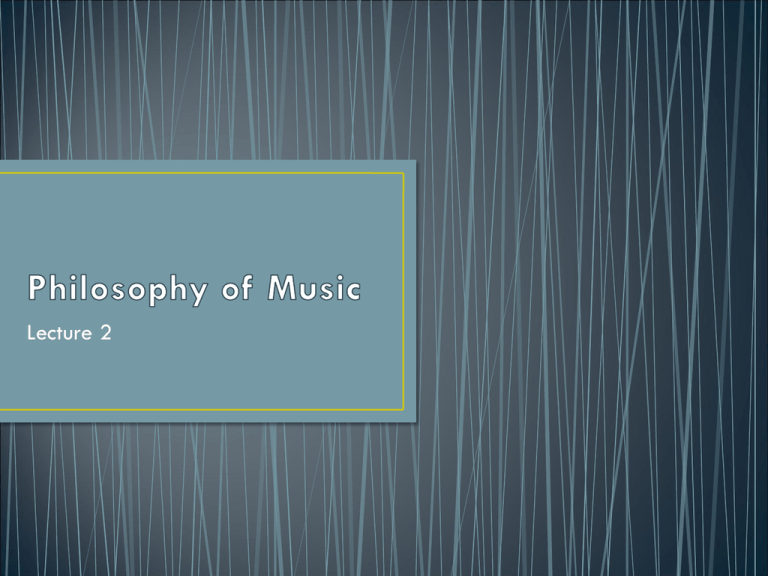
Lecture 2 • • • • • • • • Pure value: beauty, sublimity Formal: balance, grace Emotion: joyful, angry Behavioural: bounciness, sluggishness Evocative: powerful, amusing Representational: distortion, realism Second-order perceptual: purity, vividness Historically-related: originality, derivativeness Transfiguration Re-combination Composition Inspiration • ‘A work of art in the proper sense of that phrase is not an artifact, not a bodily or perceptible thing fabricated by the artist, but something solely in the artist’s head, a creature of his imagination.’ (Collingwood 1938) • ‘The gift which you possess of speaking excellently about Homer is not an art, but, as I was just saying, an inspiration; there is a divinity moving you, like that contained in the stone which Euripides calls a magnet.’ (Plato) Representation Expression • ‘There is always in art a distinction between what is expressed and that which expresses it’ (Collingwood) • ‘… leave us the mode that would fittingly imitate the utterances and the accents of a brave man who is engaged in warfare or in any enforced business, and who, when he has failed, either meeting wounds or death or having fallen into some other mishap, in all these conditions confronts fortune with steadfast endurance and repels her strokes. And another for such a man engaged in works of peace.’ (Plato) • Art expresses spirit's self-understanding not in pure concepts, or in the images of faith, but in and through objects that have been specifically made for this purpose (Hegel 1820s) SharingTeaching an imaginative experience • ‘… the reason why men enjoy seeing a likeness is, that in contemplating it they find themselves learning or inferring’ (Aristotle) • ‘a total imaginative experience identical with that of the [artist]’ (Collingwood) Aesthetic qualities Aesthetic qualities of non-art Creation Creation of non-art “transforming a given raw material ‘Taste is the faculty of judging of an object or a method of representing Art… carrying out a preconceived plan … realizing the means to a it by an entirely disinterested preconceived end” (Collingwood satisfaction or dissatisfaction. The 1938) object of such satisfaction is called Content Address ‘… the growing vacuity and beautiful’ (Kant 1791) Content of non-art Unartistic address banalization of light music ‘…we did not require dirges and ‘The frame ofexactly mind totowhich corresponds the popular lamentations in the mixed Lydian, music originally appealed, on which industralization of production.’ … and similar modes. But again, it(Adorno feeds, and which it perpetually 1932) there are certain Ionian and also reinforces, is simultaneously one of Lydian modes that are called lax.’ distraction and inattention. Listeners (Plato) are distracted from the demands of ‘independent music’ that is mere reality by entertainment which does skill in compilation’ (Hegel 1820s) not demand attention either’

